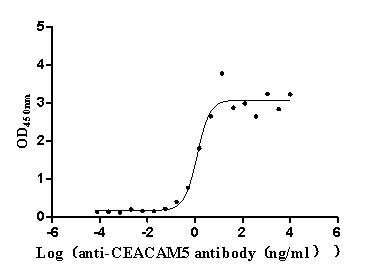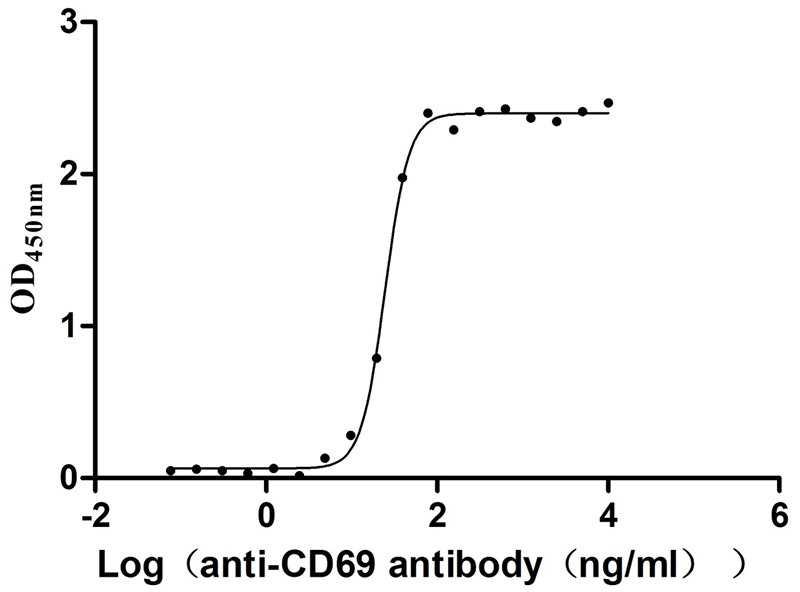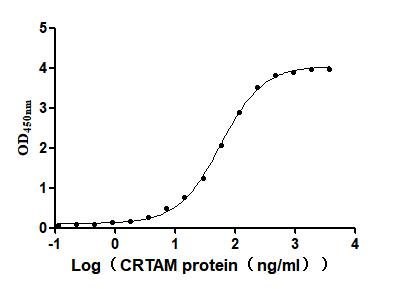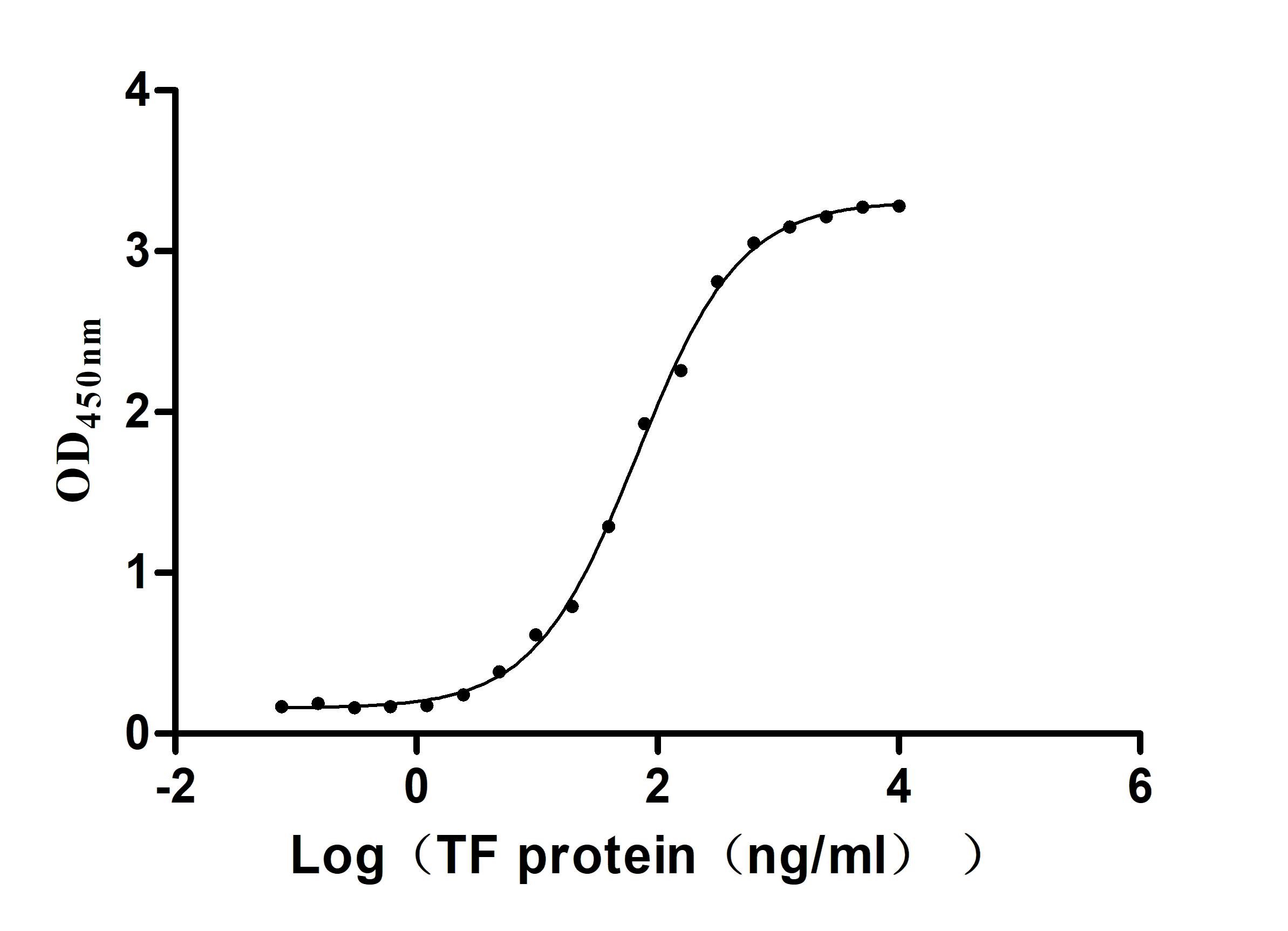Recombinant Human G-protein coupled receptor 4 (GPR4), partial
-
中文名稱:人GPR4重組蛋白
-
貨號:CSB-YP009813HU1
-
規格:
-
來源:Yeast
-
其他:
-
中文名稱:人GPR4重組蛋白
-
貨號:CSB-EP009813HU1
-
規格:
-
來源:E.coli
-
其他:
-
中文名稱:人GPR4重組蛋白
-
貨號:CSB-EP009813HU1-B
-
規格:
-
來源:E.coli
-
共軛:Avi-tag Biotinylated
E. coli biotin ligase (BirA) is highly specific in covalently attaching biotin to the 15 amino acid AviTag peptide. This recombinant protein was biotinylated in vivo by AviTag-BirA technology, which method is BriA catalyzes amide linkage between the biotin and the specific lysine of the AviTag.
-
其他:
-
中文名稱:人GPR4重組蛋白
-
貨號:CSB-BP009813HU1
-
規格:
-
來源:Baculovirus
-
其他:
-
中文名稱:人GPR4重組蛋白
-
貨號:CSB-MP009813HU1
-
規格:
-
來源:Mammalian cell
-
其他:
產品詳情
-
純度:>85% (SDS-PAGE)
-
基因名:
-
Uniprot No.:
-
別名:GPR4; G-protein coupled receptor 4; G-protein coupled receptor 6C.l; GPR6C.l
-
種屬:Homo sapiens (Human)
-
蛋白長度:Partial
-
蛋白標簽:Tag?type?will?be?determined?during?the?manufacturing?process.
The tag type will be determined during production process. If you have specified tag type, please tell us and we will develop the specified tag preferentially. -
產品提供形式:Lyophilized powder
Note: We will preferentially ship the format that we have in stock, however, if you have any special requirement for the format, please remark your requirement when placing the order, we will prepare according to your demand. -
復溶:We recommend that this vial be briefly centrifuged prior to opening to bring the contents to the bottom. Please reconstitute protein in deionized sterile water to a concentration of 0.1-1.0 mg/mL.We recommend to add 5-50% of glycerol (final concentration) and aliquot for long-term storage at -20℃/-80℃. Our default final concentration of glycerol is 50%. Customers could use it as reference.
-
儲存條件:Store at -20°C/-80°C upon receipt, aliquoting is necessary for mutiple use. Avoid repeated freeze-thaw cycles.
-
保質期:The shelf life is related to many factors, storage state, buffer ingredients, storage temperature and the stability of the protein itself.
Generally, the shelf life of liquid form is 6 months at -20°C/-80°C. The shelf life of lyophilized form is 12 months at -20°C/-80°C. -
貨期:Delivery time may differ from different purchasing way or location, please kindly consult your local distributors for specific delivery time.Note: All of our proteins are default shipped with normal blue ice packs, if you request to ship with dry ice, please communicate with us in advance and extra fees will be charged.
-
注意事項:Repeated freezing and thawing is not recommended. Store working aliquots at 4°C for up to one week.
-
Datasheet :Please contact us to get it.
相關產品
靶點詳情
-
功能:Proton-sensing G-protein coupled receptor couples to multiple intracellular signaling pathways, including GNAS/cAMP, GNAQ/phospholipase C (PLC), and GNA12/GNA13/Rho pathways. Acidosis-induced GPR4 activation increases paracellular gap formation and permeability of vascular endothelial cells through the GNA12/GNA13/Rho GTPase signaling pathway. In the brain may mediate central respiratory sensitivity to CO(2)H(+).
-
基因功能參考文獻:
- Proton-sensing GPR4 signaling mediated the proton-induced inhibitory effects on the osteogenesis of BMSCs. YAP was the downstream effector of GPR4 signaling. Extracellular pH modulates the osteogenic responses of BMSCs by regulating the proton-sensing GPR4-YAP pathway. PMID: 27256071
- These results suggest that zOGR1, but not GPR4, is also a metal-sensing G-protein-coupled receptor in addition to a proton-sensing G-protein-coupled receptor, although not all metals that activate hOGR1 activated zOGR1. PMID: 28270026
- GPR4 blockade attenuated renal injury after IR and reduced the cell apoptosis through the suppression of CHOP expression. PMID: 29089376
- acidosis/GPR4-induced endoplasmic reticulum stress pathways in endothelial cells may regulate vascular growth and inflammatory response in the acidic microenvironment. PMID: 28134810
- it was demonstrated that GPR4 affects ECs by regulating Notch1, a function that may be important for physiological and pathological angiogenesis. PMID: 27279286
- GPR4 induces angiogenesis via GPR4-induced p38-mediated IL6, IL8 and VEGFA secretion at acidic extracellular pH in squamous cell carcinoma of the head and neck PMID: 27078157
- The results suggested that GPR4 may play an important role in the development of epithelial ovarian carcinoma (EOC), and its overexpression might be required for the angiogenesis, tumor growth, and metastasis of EOC PMID: 23888957
- acidosis/GPR4 signaling regulates endothelial cell adhesion mainly through the G(s)/cAMP/Epac pathway PMID: 22110680
- The mutation of histidine residue at 79, 165, or 269 from the N-terminal of GPR4 to phenylalanine shifted the half-maximal effective concentration (EC(50)) of proton-induced signaling activities to the right, including cAMP accumulation. PMID: 20211729
- Endogenous GPR4 in endothelial cells may be a potential G protein-coupled receptor by which LPC signals proinflammatory activities. PMID: 12805023
- GPR4, a close relative of OGR1, also responds to pH changes, but elicits cyclic AMP formation PMID: 12955148
- sphingosylphosphorylcholine and lysophosphatidic acid are not the ligands for GPR4 and that this receptor may constitutively inhibit ERK1/2 activation PMID: 14567679
- GPR4 and TDAG8 overexpression in human tumors plays a role in driving or maintaining tumor formation PMID: 15221007
- results identify sphingosylphosphorylcholine and its receptor, G protein-coupled receptor 4(GPR4), as critical regulators of the angiogenic potential of endothelial cells PMID: 15857892
- GPR4 may play a critical role in the inflammatory responses activated by lysophosphatidylcholine PMID: 16461426
- GPR4 in brain endothelial cells regulates monocyte transmigration. PMID: 17364894
- lysophosphatidylcholine receptor G protein-coupled receptor 4 (GPK4) was expressed in YPEN-1 cells and triggered the cAMP/protein kinase A/cAMP response element-binding protein pathway, resulting in upregulation of adhesion molecules. PMID: 17437524
- Previously postulated "ligand-independent" signaling of GPR4 is mediated through proton-sensing mechanisms. PMID: 17462861
顯示更多
收起更多
-
亞細胞定位:Cell membrane; Multi-pass membrane protein.
-
蛋白家族:G-protein coupled receptor 1 family
-
數據庫鏈接:
Most popular with customers
-
Recombinant Human UL16-binding protein 1 (ULBP1) (Active)
Express system: Mammalian cell
Species: Homo sapiens (Human)
-
Recombinant Human Poliovirus receptor (PVR) (I340M), partial (Active)
Express system: Mammalian cell
Species: Homo sapiens (Human)
-
Express system: Mammalian cell
Species: Homo sapiens (Human)
-
Recombinant Human Early activation antigen CD69 (CD69), partial (Active)
Express system: Mammalian cell
Species: Homo sapiens (Human)
-
Recombinant Mouse Cytotoxic and regulatory T-cell molecule (Crtam), partial (Active)
Express system: Mammalian cell
Species: Mus musculus (Mouse)
-
Recombinant Human Serotransferrin(TF) (Active)
Express system: Mammalian cell
Species: Homo sapiens (Human)
-
Recombinant Mouse Cadherin-6(Cdh6),partial (Active)
Express system: Mammalian cell
Species: Mus musculus (Mouse)


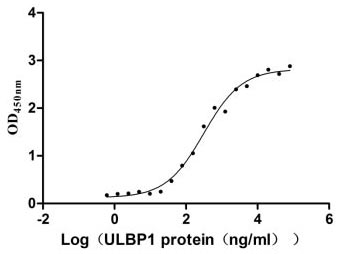
-AC1.jpg)
